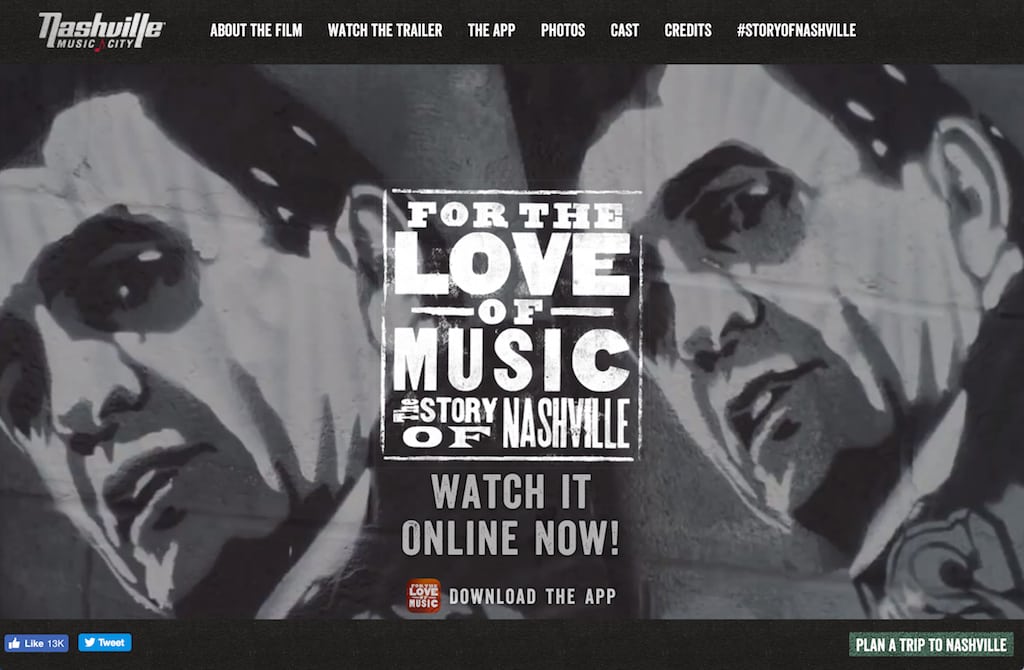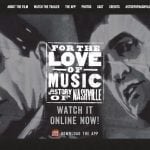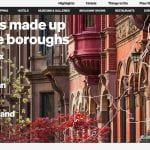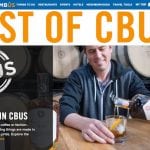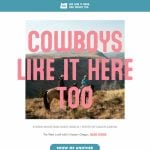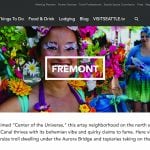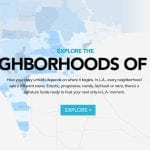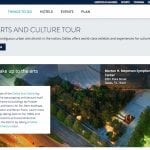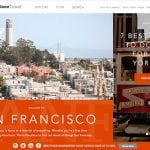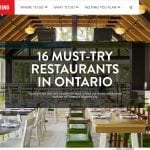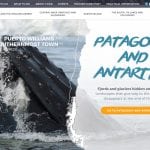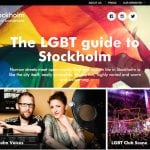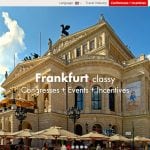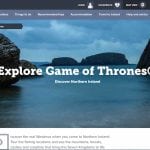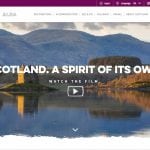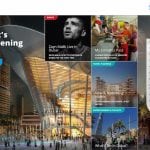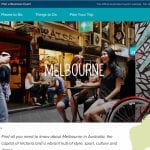Skift Take
The most modern tourism bureau websites today emphasize neighborhood storytelling, more nuanced content for different consumer profiles, mobile-first modular design, and full-width photos and videos with a strong human voice.
- Nashville Music City uses music and entertainment to define its brand.
- NYC & Company’s new site emphasizes local neighborhood experiences above all else.
- Visit California set the benchmark for digital tourism storytelling when it launched in 2015.
- Columbus, Ohio celebrates people and place better than anyone else in the Midwest.
- Travel Oregon campaign says you might like Oregon, or you might not.
- Visit Seattle’s new site promotes alternative music and funky neighborhoods.
- Discover Los Angeles shows a growing sophistication in map navigation.
- New Visit Dallas site emphasizes local neighborhoods and affordable luxury.
- San Francisco Travel integrates Airbnb content into its vast neighborhood sections.
- New Destination Canada website articulates wide variety of travel experiences.
- Tourism Nova Scotia shows what can be done with a smart design and small budget.
- Travel Chile uses stunning imagery and smart navigation to corral massive amounts of content.
- Colombia Travel’s energetic website aligns with country’s rise on global travel scene.
- Visit Finland is the most visceral, visual experience in this list.
- Visit Stockholm’s website resembles a glossy travel magazine.
- Visit Norway’s portal is clean and a bit quirky.
- New Frankfurt Tourism website prioritizes crisp photography and super modern delivery.
- London & Partners highlights collaboration with economic development agencies.
- Visit Zurich’s creative site delves into non-traditional travel themes.
- Ireland Tourism is doing some great things with food tourism content.
- VisitScotland’s website prioritizes video content and placemaking.
- Visit Dubai’s website shows off emirate’s cultural experience.
- Visit Singapore’s new portal is designed to show a more layered view of the city-state.
- Tourism Australia has focused on food and celebrity content the last two years.
- Auckland Tourism’s site integrates booking functionality into content.
Choosing the world’s best tourism websites is more difficult in 2016 than it was the last time we picked our favorites in late 2013, but that’s not because there are so many better online experiences today in the destination marketing world.
It’s more challenging because tourism bureaus are all simplifying their websites on the front-end. The best sites are adopting a similar full-width modular design, flat architecture, and streamlined navigation structure due to the demand for speed and efficiency on mobile.
Bells and whistles are getting thrown out in favor of load times and intuitive user experience.
That’s not to suggest the best sites aren’t more sophisticated than ever before. It’s just that the real innovation is happening in the back-end.
The internal engines of today’s most modern tourism sites feature much more intelligent customer relationship management (CRM) platforms than a couple years ago. They’re capable of generating endless amounts of data analytics for strategizing content, developing more targeted partner promotions, and creating in-depth reporting.
Shift To Neighborhood Storytelling
The big trend in front-end design and content management over the last few years is a shift from static “billboard” websites — promoting tourism and hospitality partners with lots of banner ads and generic descriptions — to more organic story-driven portals that resemble travel media websites.
The launch of Visit California’s platform in January 2015 set the standard for the long-scrolling, photo-driven, content-first, mobile-first tourism website. In October 2013, visitcalifornia.com had 150,000 views for the month. In May 2016, the site had 1.5 million views, according to SimilarWeb.
The best tourism storytelling prioritizes three things:
One, tourism bureaus are describing their individual neighborhoods much better, and they’re developing proprietary mobile-friendly maps customized to the destination, versus relying on Google Maps’s limited functionality in terms of design.
The neighborhood-centric focus does a lot of things. It delineates the selling points of a destination in a more nuanced way, broadens the identity of the destination for more diverse audiences, customizes the destination experience for individual viewers, and answers the demand for authentic local travel.
Equally interesting, the maps provide a visual home base from which to navigate through the site. It’s a more visceral, human way to explore a destination versus a basic list, and it drives higher time-on-site engagement.
Two, destination marketers are getting much better at diving deeper into their consumer segmentation profiles and developing more nuanced content based on that intelligence.
For example, culinary tourists can be broken down into a dozen sub-groups, from farmers market fans to foragers, so content should speak to those individual travel preferences.
Three, there’s a surge toward longer-form videos profiling local residents who are proudly promoting their destination in a natural, authentic voice.
Visit Scotland and Visit Zurich are two good examples of tourism bureaus employing the locals to help sell the destination with their personal stories.
Virtual reality and 360-degree video are obviously making a growing impact on destination marketing, but they don’t impact website design so they’re not addressed here.
More than a few websites moved in and out of our 2016 list as we researched hundreds of destinations. Miami, New Zealand, Copenhagen, Vienna, Britain, South Africa, Iceland, and three Canadian tourism bureaus were considered, but we wanted to cap this list at 25 bureaus. Email [email protected] if you have any other suggestions.
So, here they are, organized geographically in no particular order. Whereas our last overview of the 20 best tourism websites focused solely on innovative visual design, this list prioritizes websites with the best user experience overall, especially on mobile; the most modern modular layout, seamless navigation, and impactful visuals; and the most nuanced multi-format storytelling.
A fourth, more subjective criteria, involved how all of the above work together to make you want to go visit the destination, and more importantly, actually use the website to research the entire travel experience.
Top 25 Tourism Websites
Nashville Music City: If you don’t think you like country music or Tennessee, you will after watching The Story of Nashville. The 43-minute film is the best we’ve seen at defining a destination’s spirit and soul, and there’s also a video series describing each of the city’s neighborhoods.
NYC & Company: New York’s brand new portal was designed from the ground up to portray New York as five individual cities with hundreds of unique neighborhoods in one. Each of the boroughs has exhaustive travel content, including a wide range of fun live videos with neighborhood locals.
Visit California: VisitCalifornia.com uses content to direct traffic to partner websites better than anyone. There’s also a ton of compelling video, such as the California Dream Eater series that bases its programming on crowdsourced social media recommendations.
Experience Columbus: Great on mobile and super fast, Columbus, Ohio’s tourism site highlights the city’s neighborhoods, festivals and events, and trendy food and beverage scene with a Millennial fetish for anything local and artisanal.
Travel Oregon: Travel Oregon’s new “You Might Like Oregon” campaign suggests that some people like Oregon and some people don’t, because Oregon isn’t trying to be something for everyone. There are some super fun video shorts attached to this campaign.
Visit Seattle: The new website’s VisitSeattle.tv video studio is creating highly-watched music news videos promoting local bands, who perform at eclectic venues around town to drive exposure to underserved local neighborhoods.
Discover Los Angeles: This website has a great map with indepth descriptions of each neighborhood to direct visitors through the city. The map also supports the groovy Get Lost In L.A. campaign designed to inspire visitors to explore neighborhoods beyond the iconic attractions.
Visit Dallas: Visit Dallas wanted to better define itself among its competitive set in the leisure and meetings markets by profiling all of the different neighborhoods in the city. Launched last month, the new website has a big map high up on the home page that should be copied by every bureau.
San Francisco Travel: If ever there was a city that needs to define the individual character of its neighborhoods, it’s San Francisco. The website features good map functionality on the homepage, and there’s also valuable Airbnb-supplied content where hosts contribute their favorite local hangouts.
Keep Exploring Canada: Destination Canada launched this new national tourism site in May 2016 as a breezy overview of what to explore among so many different provinces and territories. Brand USA should pay attention. The site is a good example of curating content for a wide area to drive traffic to individual regions.
Tourism Nova Scotia: This wins on design alone. Great professional photos and smart use of crowdsourced imagery. Map functionality allows you to search easily for specific activities like artist studio visits and upcoming farmer’s markets.
Chile Travel: This is the best tourism website in Latin America, employing seamless navigation architecture to explore all of the different regions and myriad levels of sub-category content.
Colombia Travel: A lot going on with this website. There’s a range of content here from fashion shows to flower fairs to Amazonian festivals that accurately depicts the energy behind the rise of Colombia into a global travel destination.
Visit Finland: Your heart rate drops 10 points while exploring this site due to the ephemeral imagery. The Tour de Relax is based on reality television travel races, except here you’re supposed to go slow.
Visit Stockholm: This colorful, high-energy site does a good job showing the vibrancy and variety in Sweden’s cosmopolitan capital. It’s very lifestyle focused with only three main categories highlighting: activities, culinary, and neighborhoods.
Visit Norway: The long homepage gives you pretty much everything you need to plan a trip to Norway, which is especially helpful on mobile. The quirky #SheepWithAView content series pinpoints the country’s identity.
Frankfurt Tourism: This brand new portal takes the concept of visually-driven website design to the extreme on desktop. Super clean design on mobile. Succeeds in starting to shift the perception of Frankfurt as a financial capital into a more lifestyle experience.
Zurich Tourism: Intelligent site with unique geotag place-makers on photos to open new content, more cerebral travel content like the focus on Dada, and a great series of videos with locals discussing their jobs.
London & Partners: The tourism bureau has been instrumental in developing and promoting the London tech scene, and integrating that into travel and tourism promotion. An excellent example of collaboration between destination marketing and economic development.
Ireland Tourism: The content promoting Northern Ireland’s Year of Food & Drink 2016 and various geographical promotions like The Wild Atlantic Way earns Ireland a spot here.
VisitScotland: The video of the Isle of Skye scallop scuba diver with dad and son eating fresh grilled scallops at the water’s edge with “the mist rolling down the loch” is the best food tourism video of the year.
Visit Dubai: This was an expensive website to build. The goal here is clearly to position the emirate as a cultural melting pot celebrating all races and religions; a family-friendly travel destination; and a luxurious, modern, and safe vacation or meeting spot by the sea.
Visit Singapore: The new Singapore website was designed to portray the city-state as a more well-rounded cultural destination with an emerging arts scene to complement the well-known shopping and culinary experiences.
Tourism Australia: Nobody really does content better, especially with the Restaurant Australia campaign, which helped drive average visitor spend up double digits over the last two years.
Auckland Tourism: The modular layout provides an excellent mobile experience, and the site integrates booking functionality for activities like wine tours into the editorial content.
The Daily Newsletter
Our daily coverage of the global travel industry. Written by editors and analysts from across Skift’s brands.
Have a confidential tip for Skift? Get in touch
